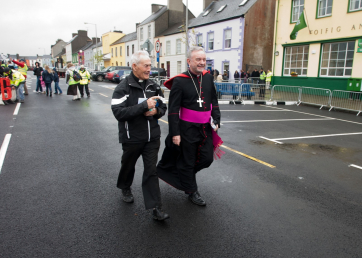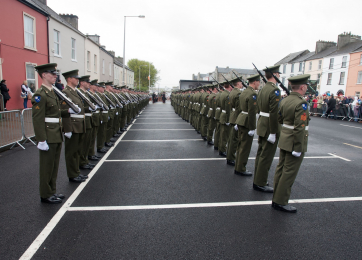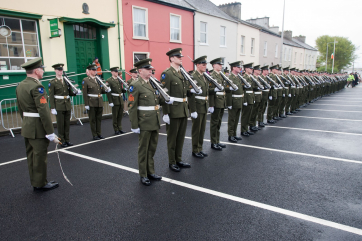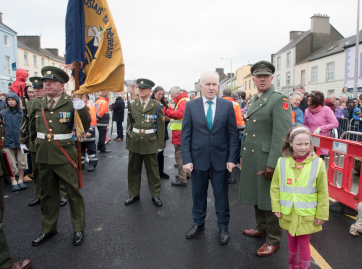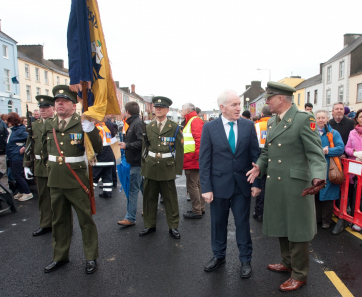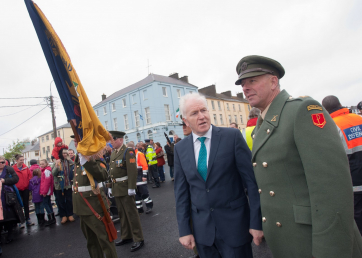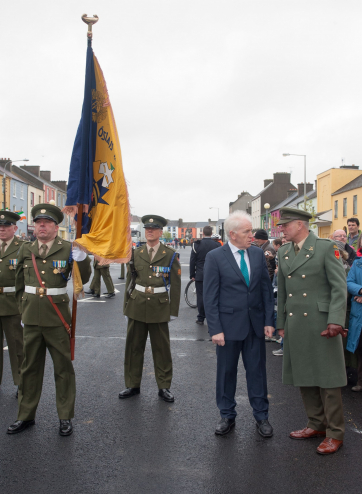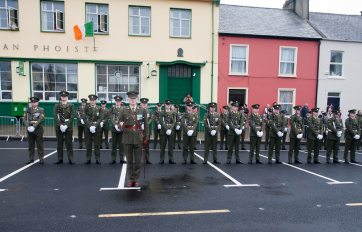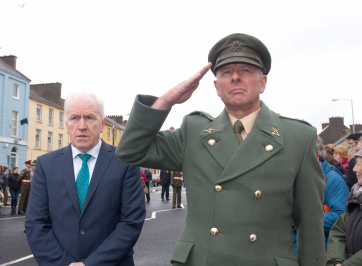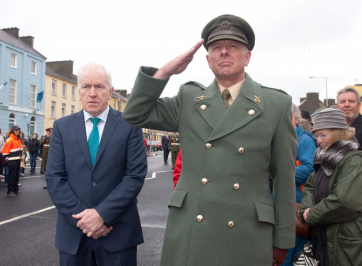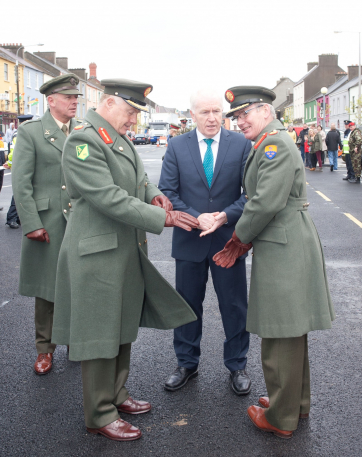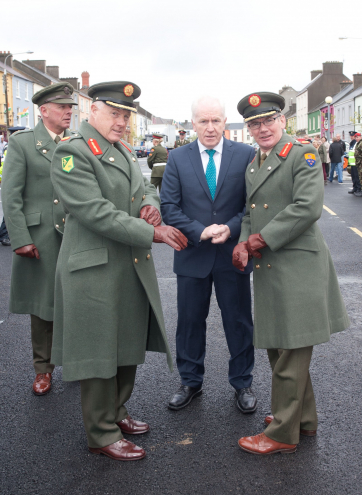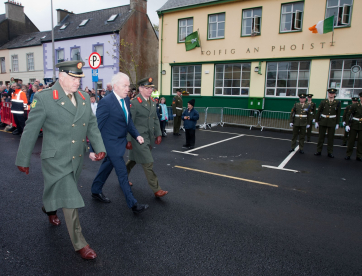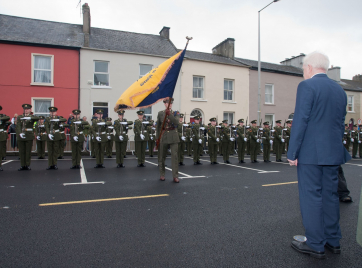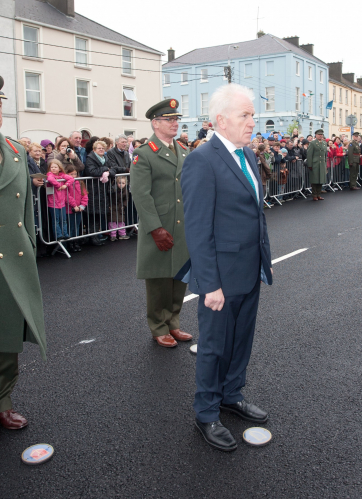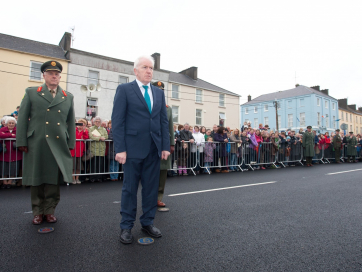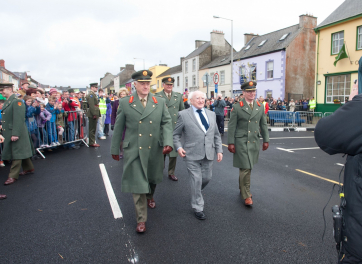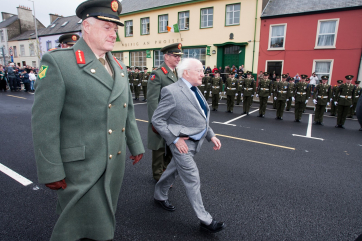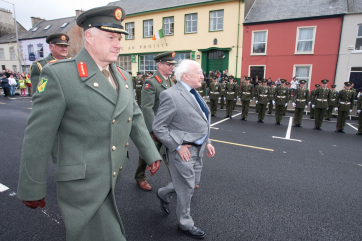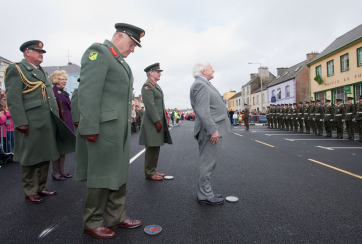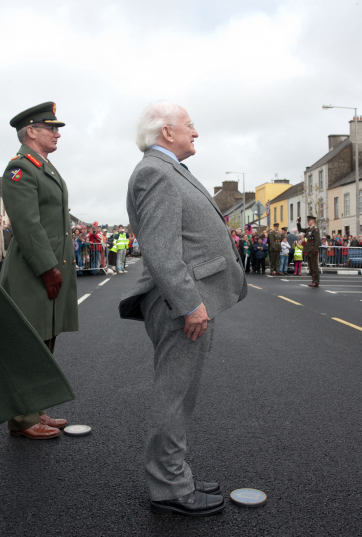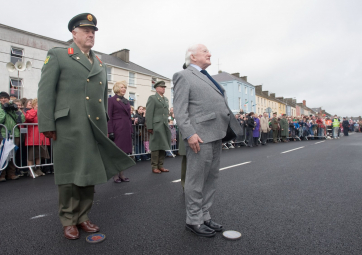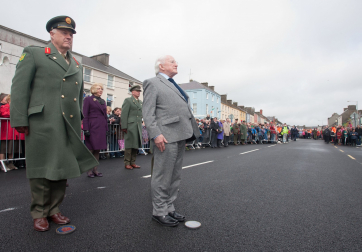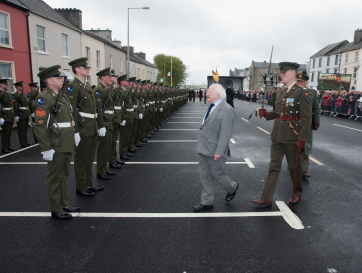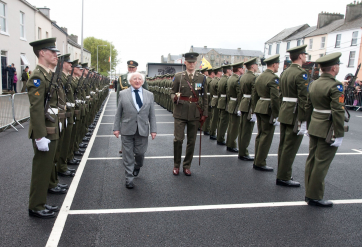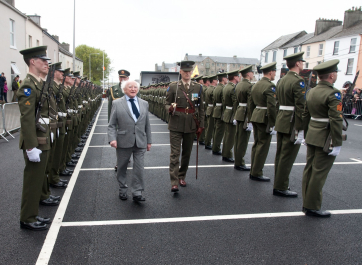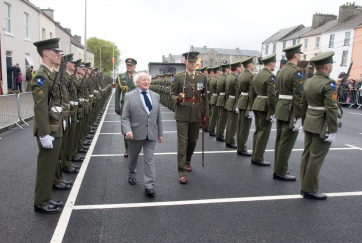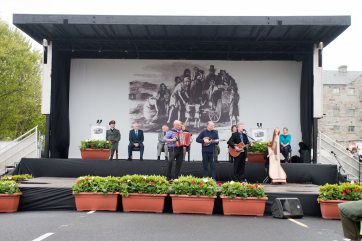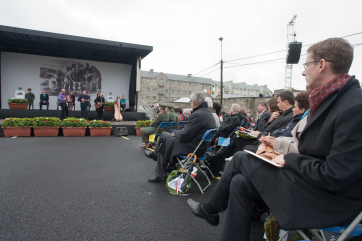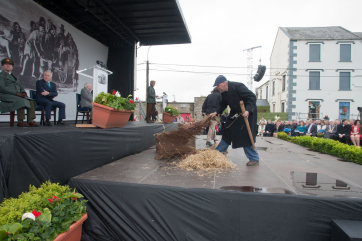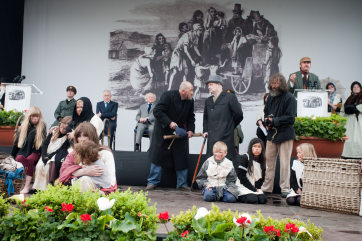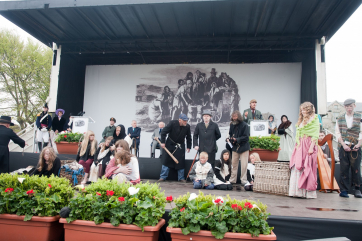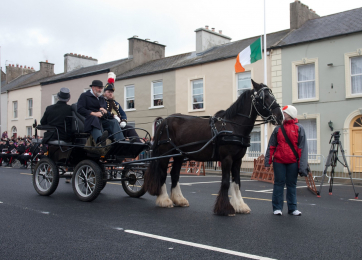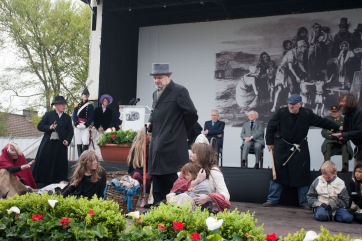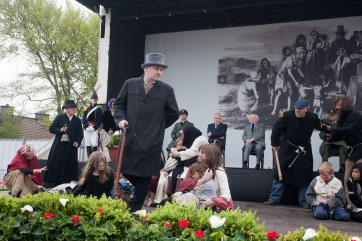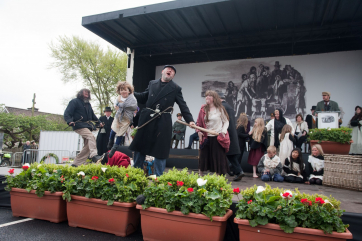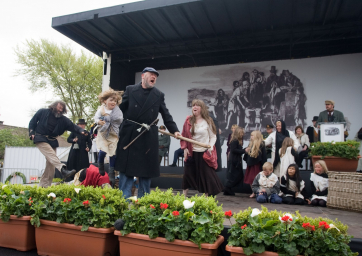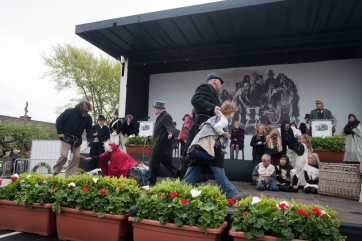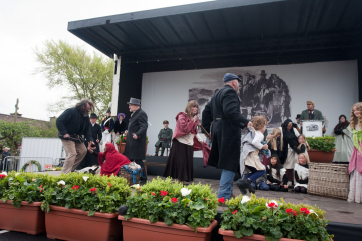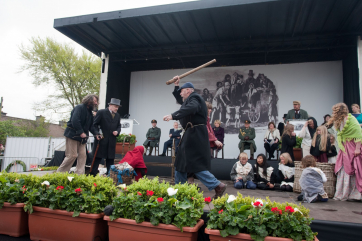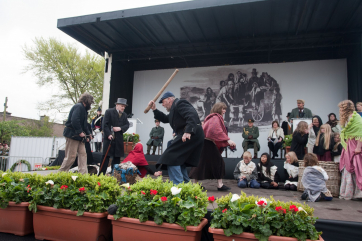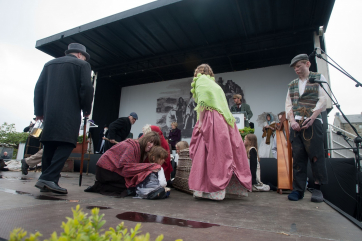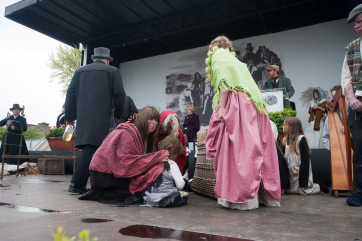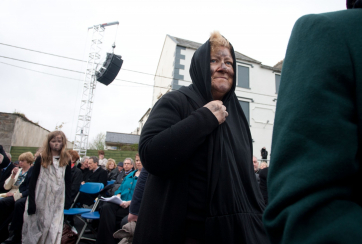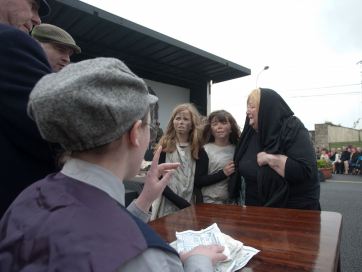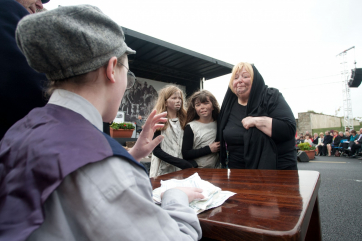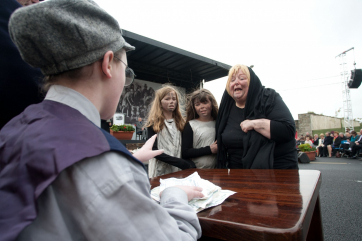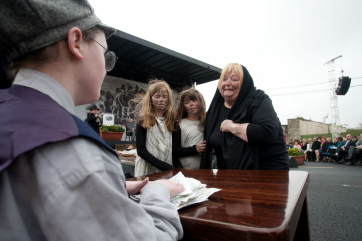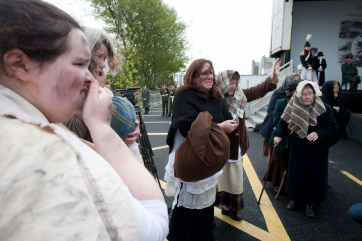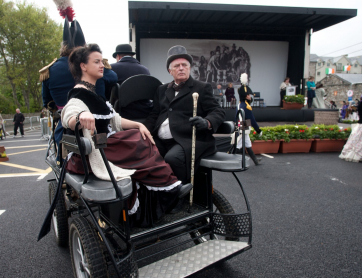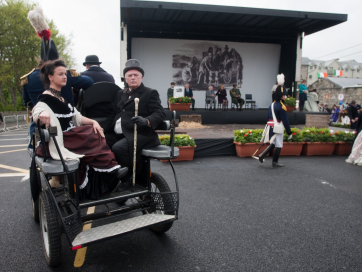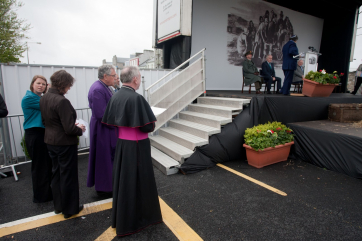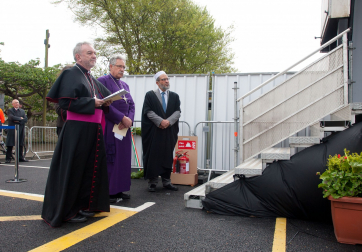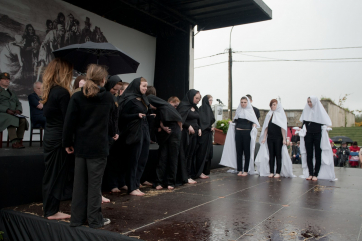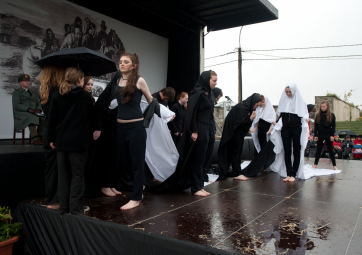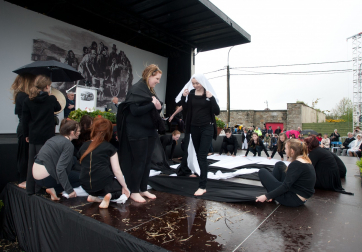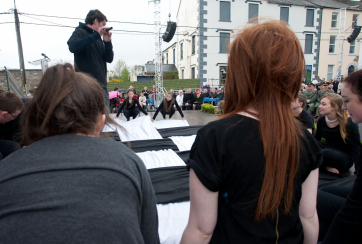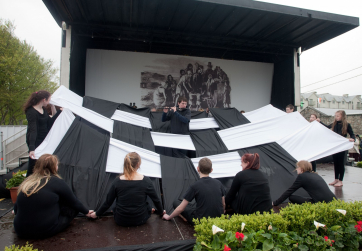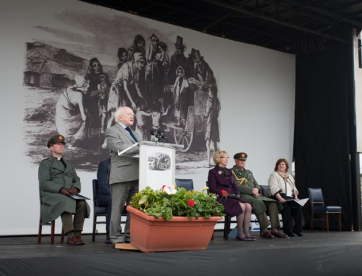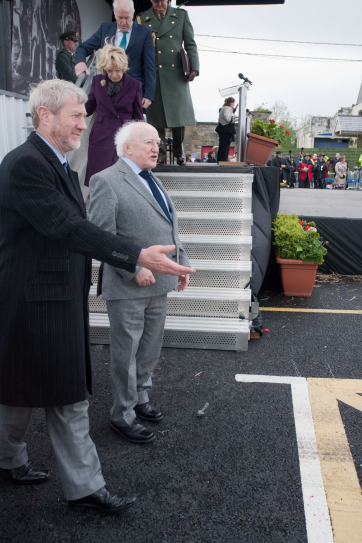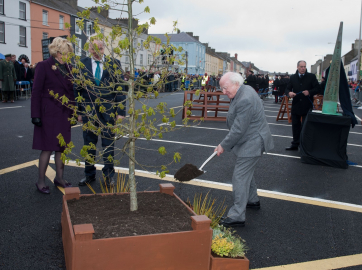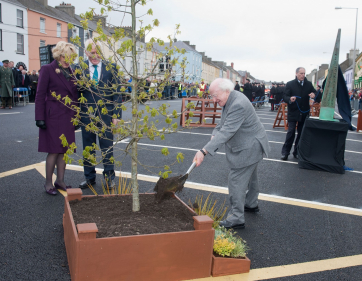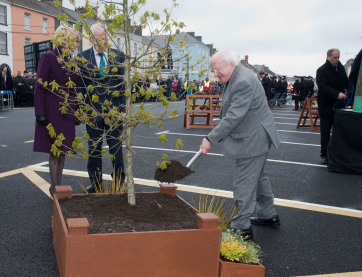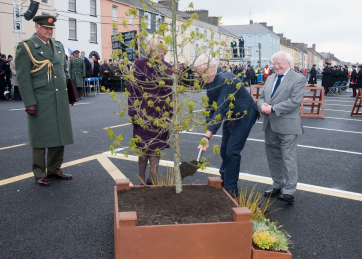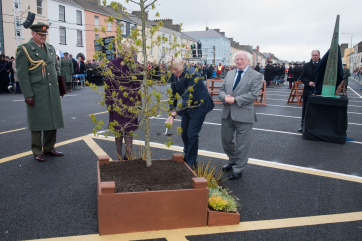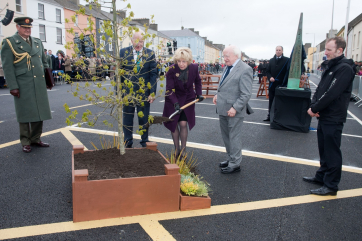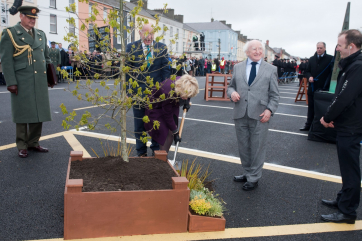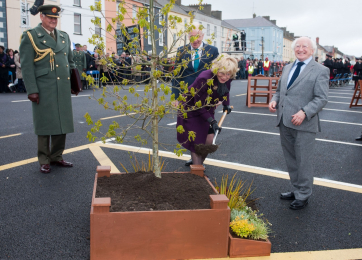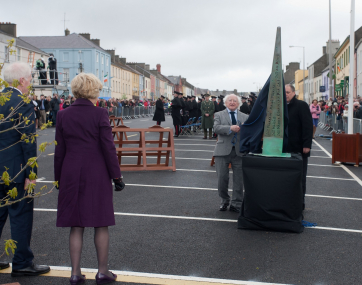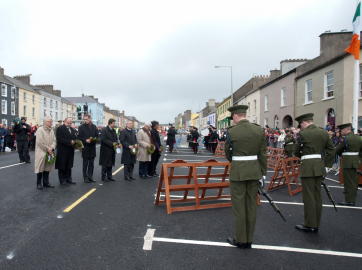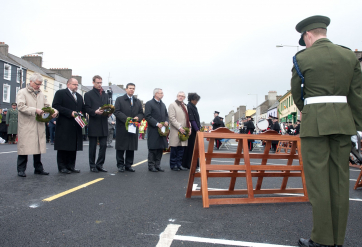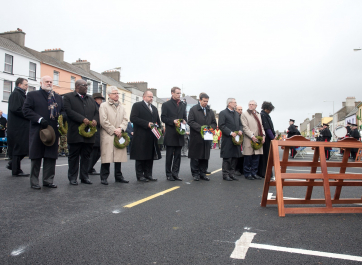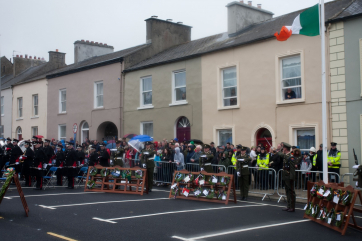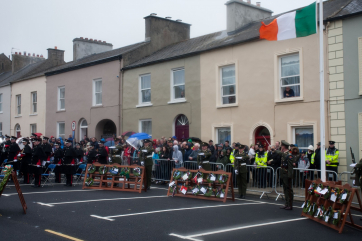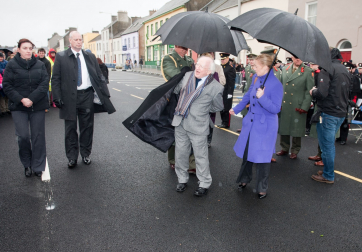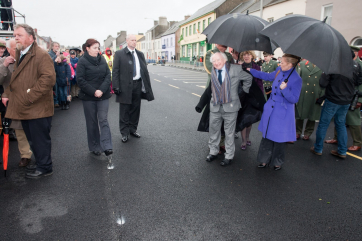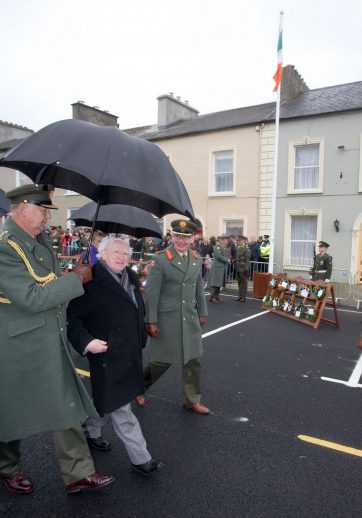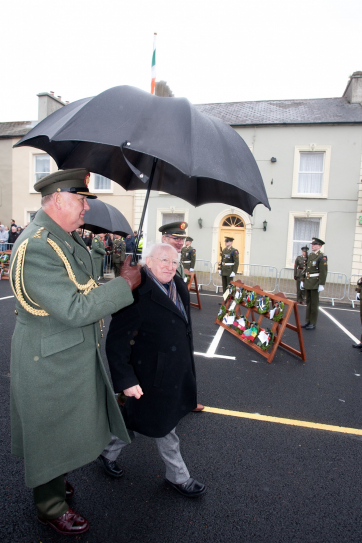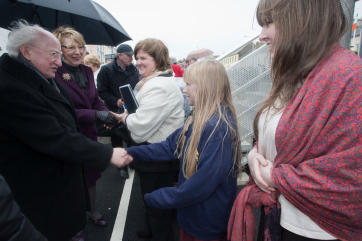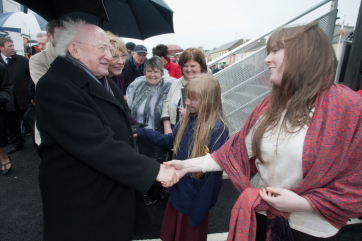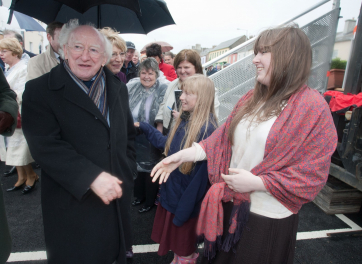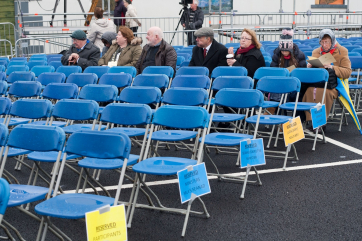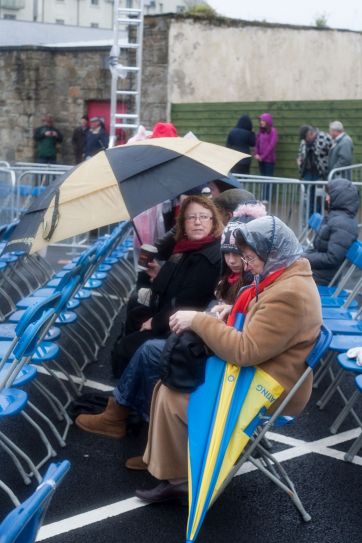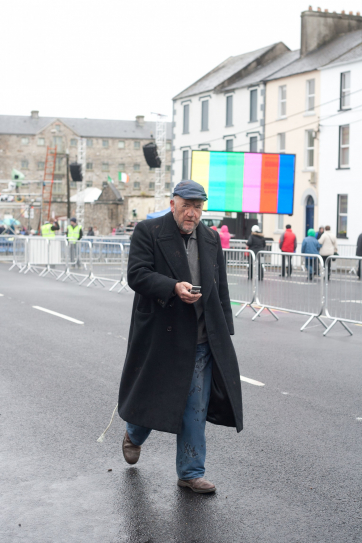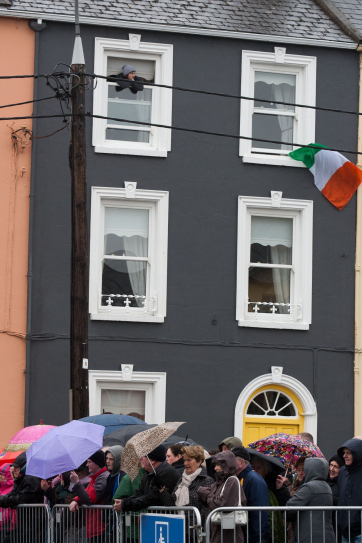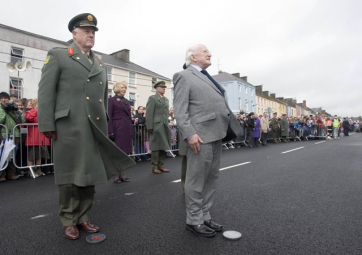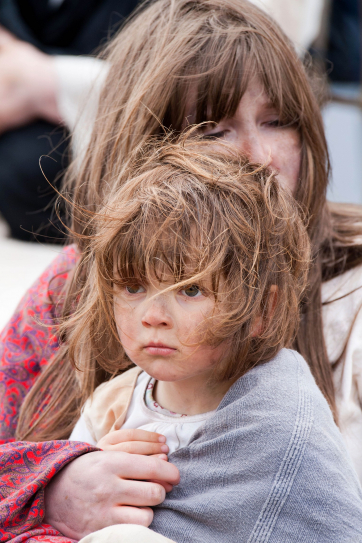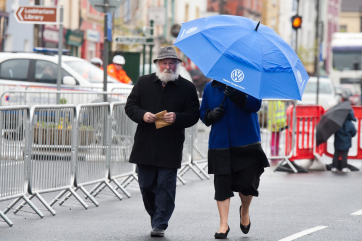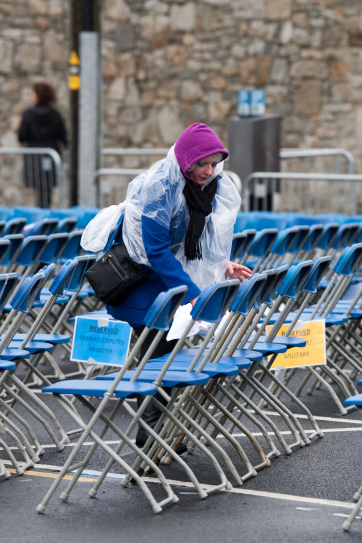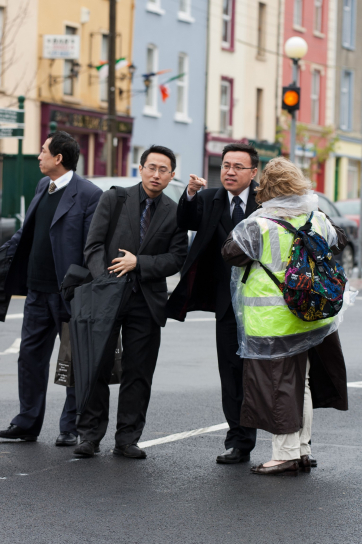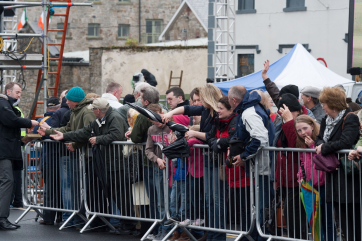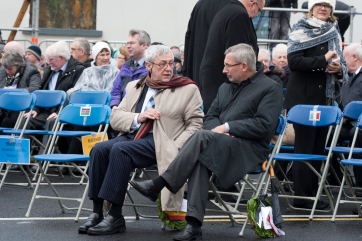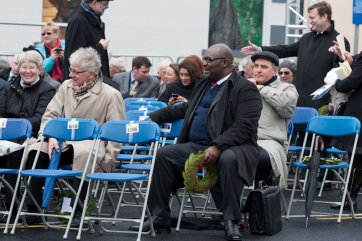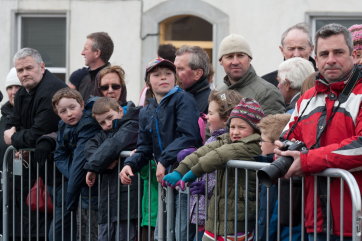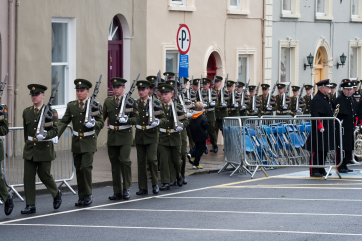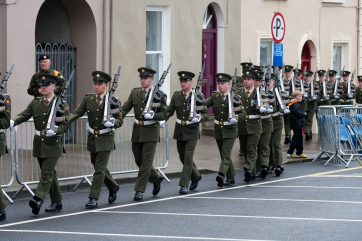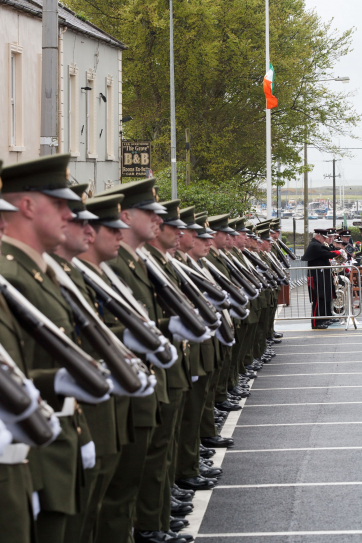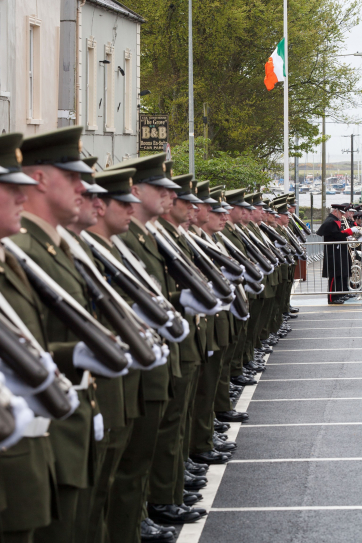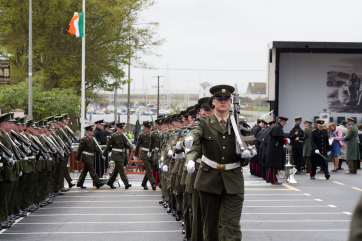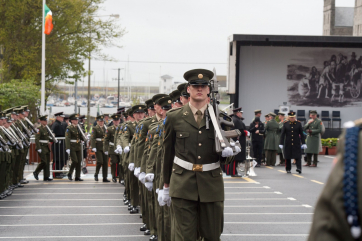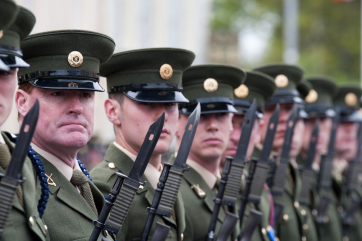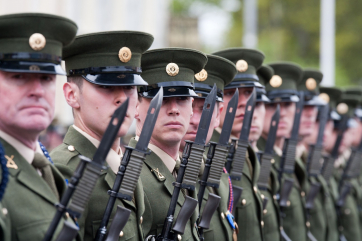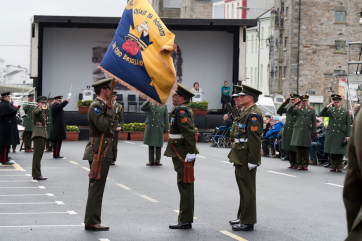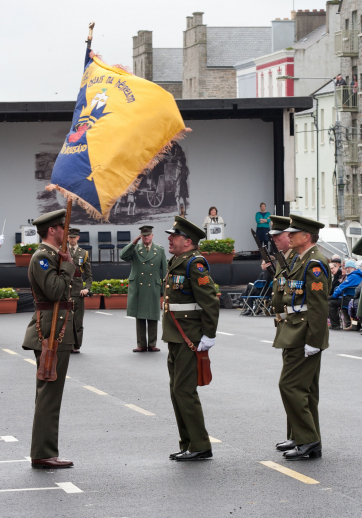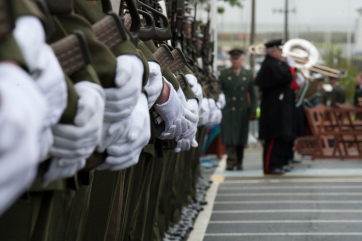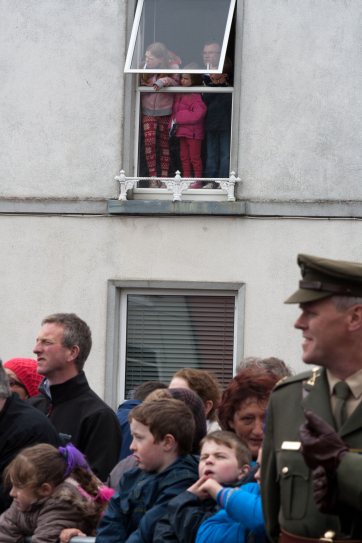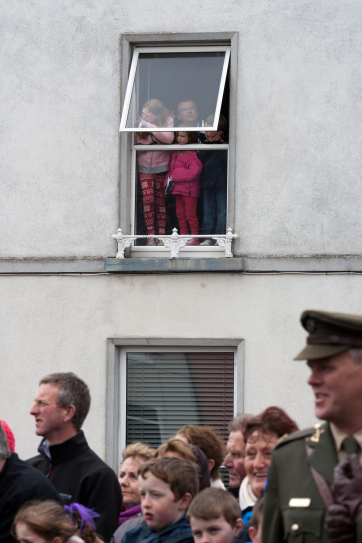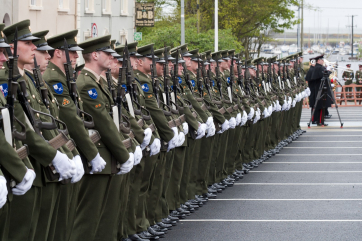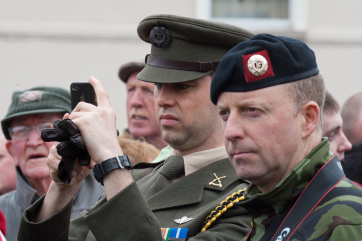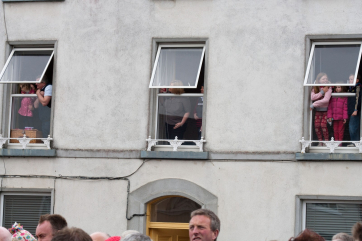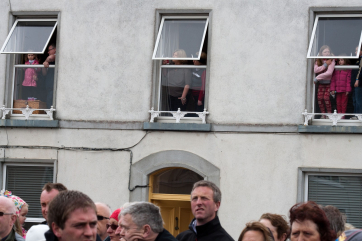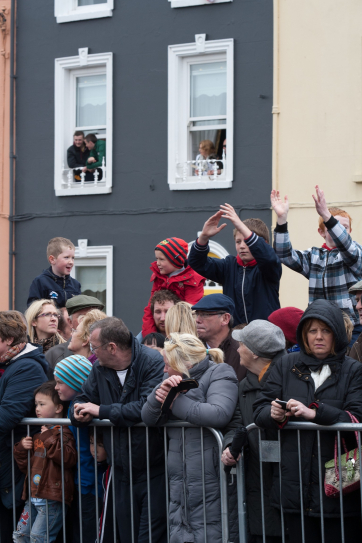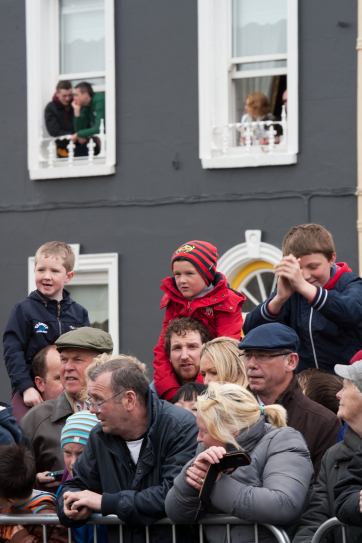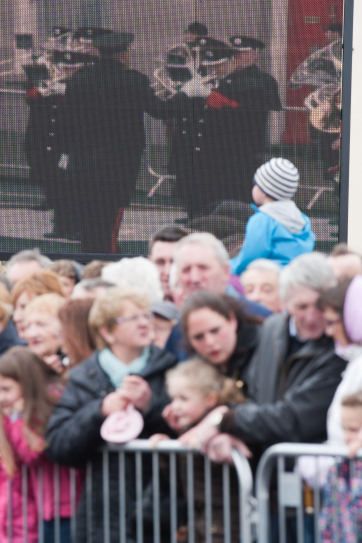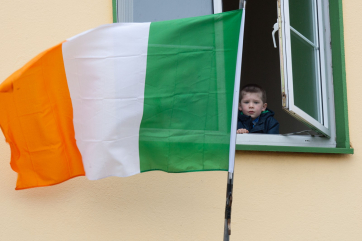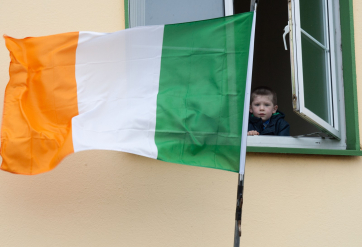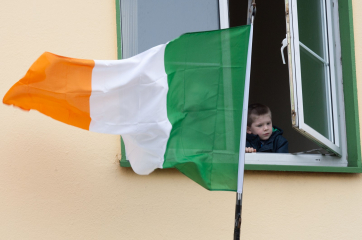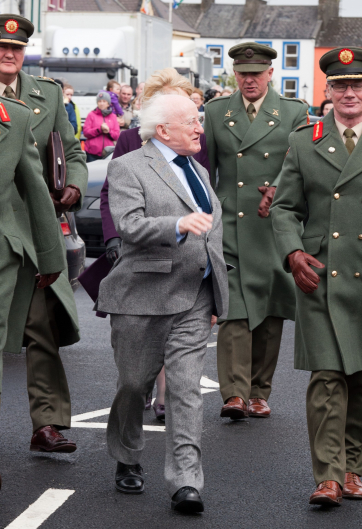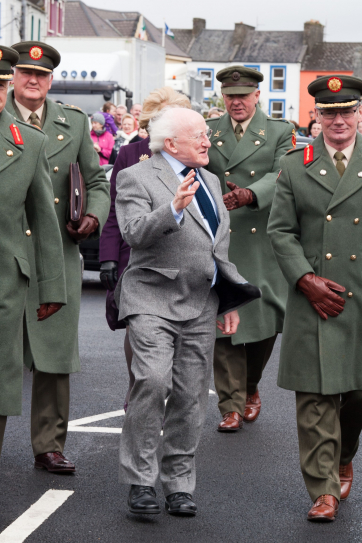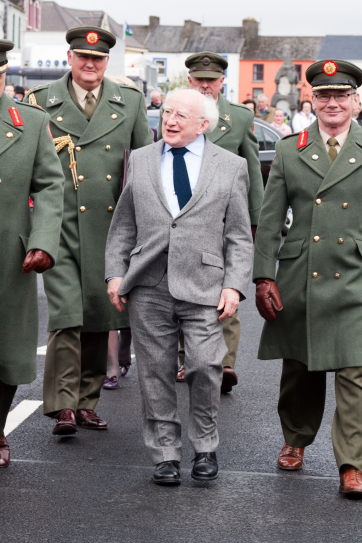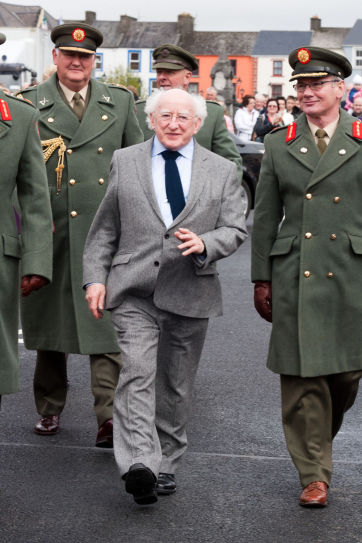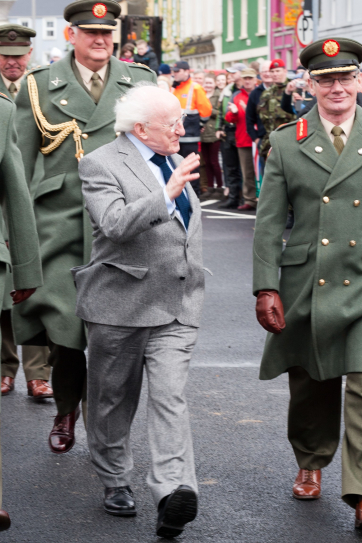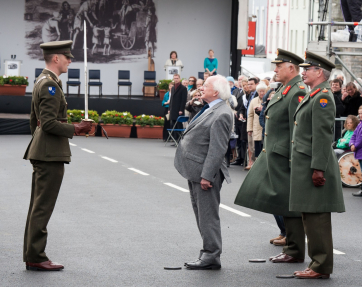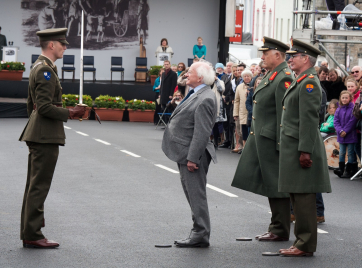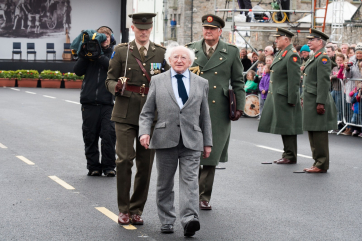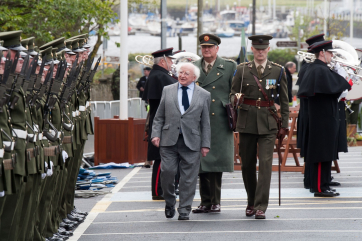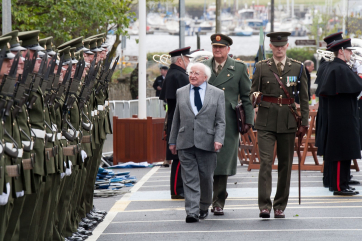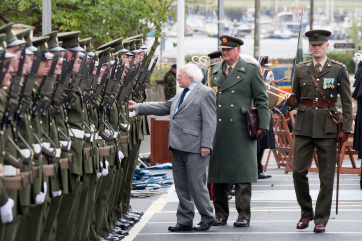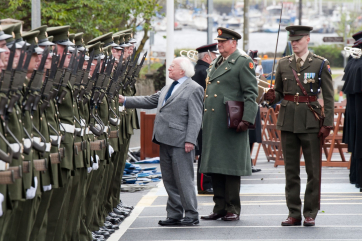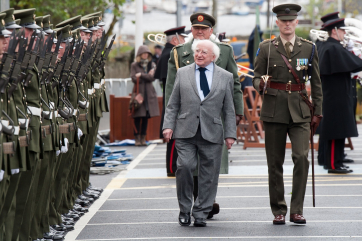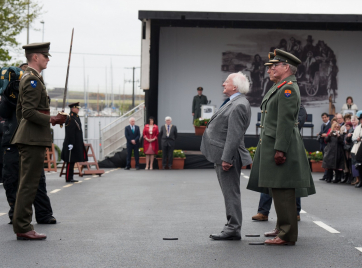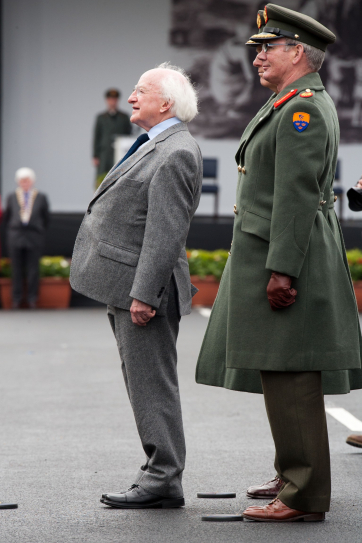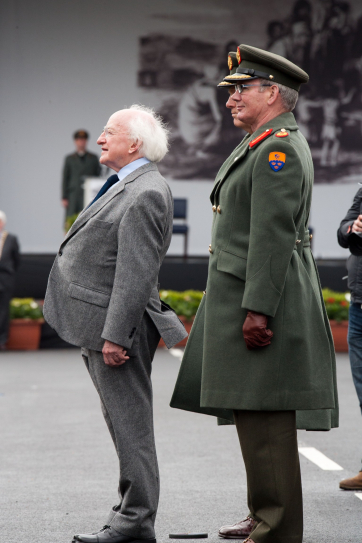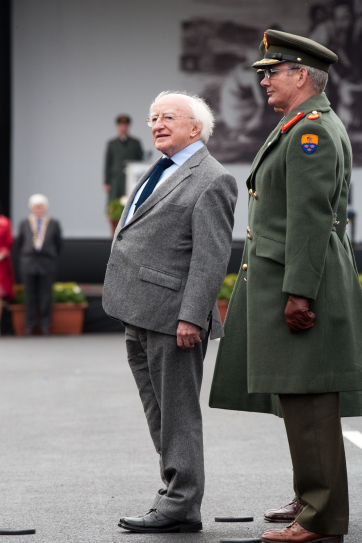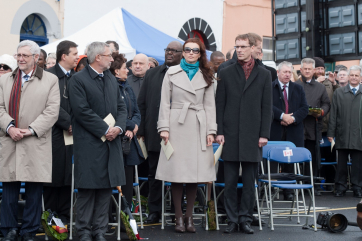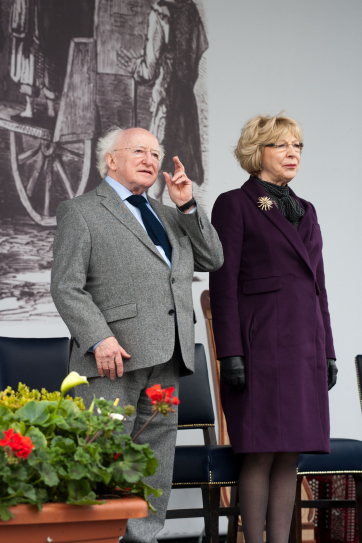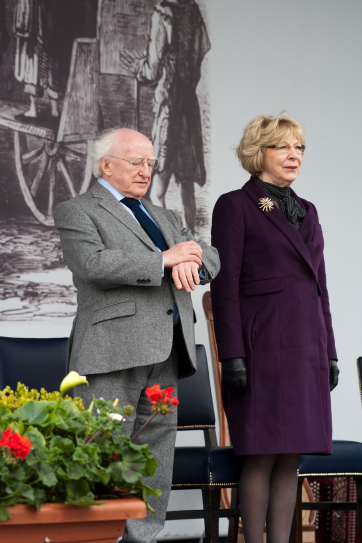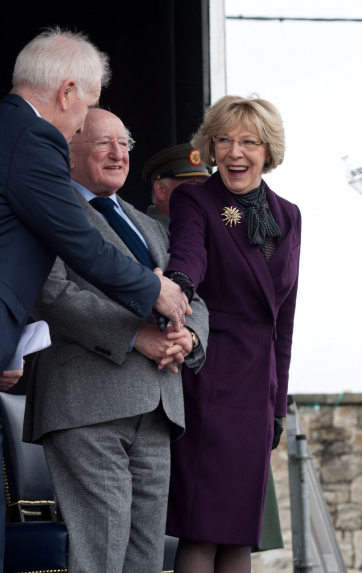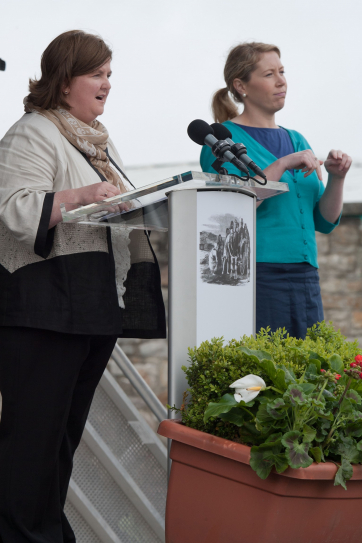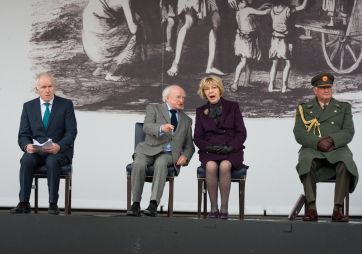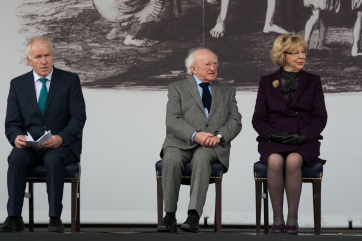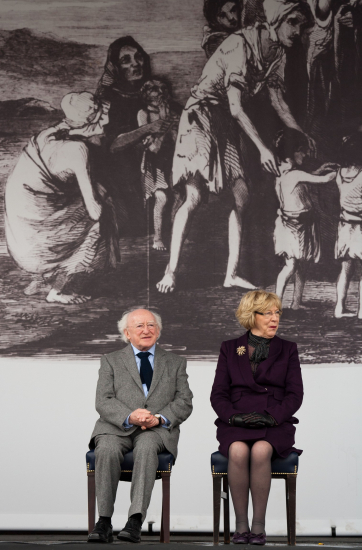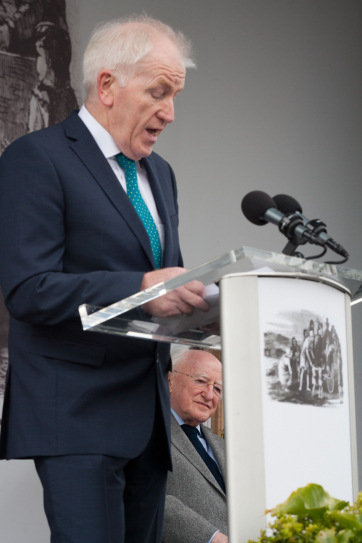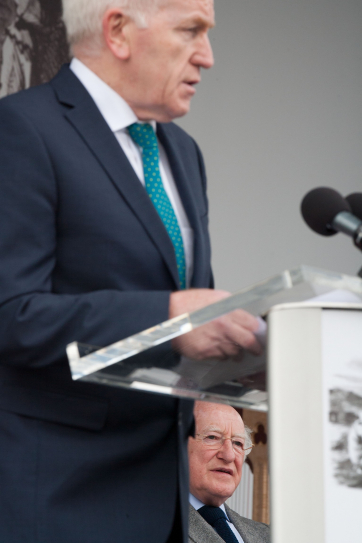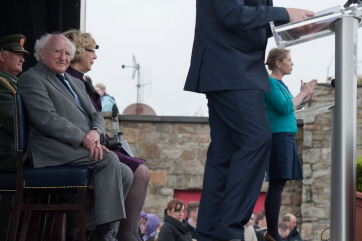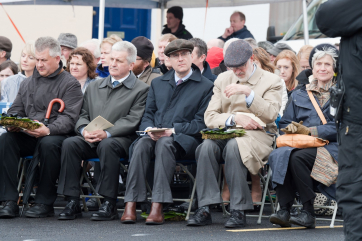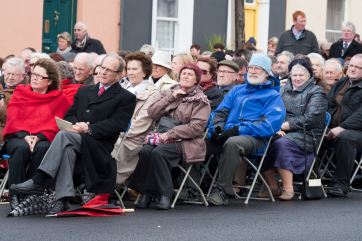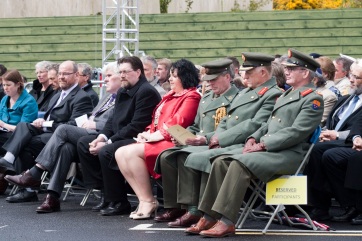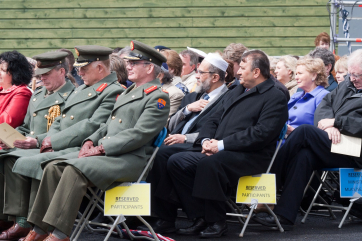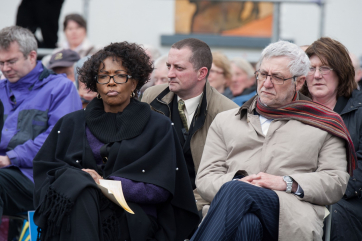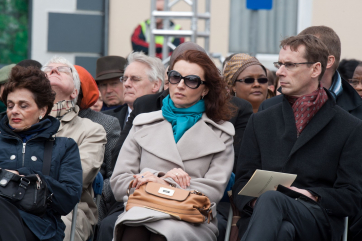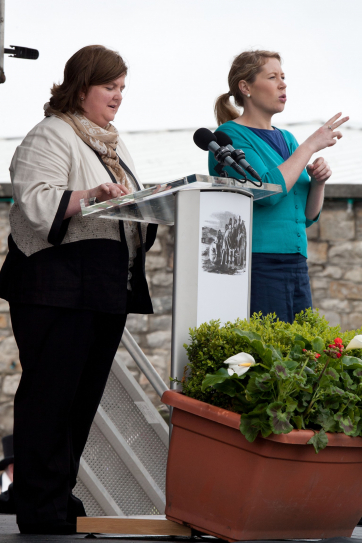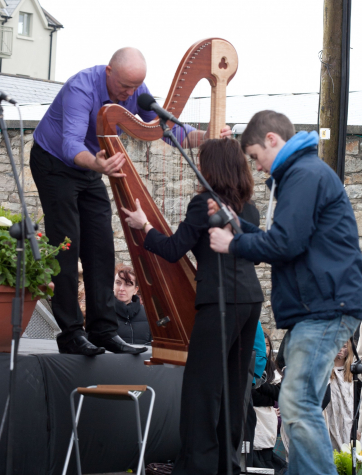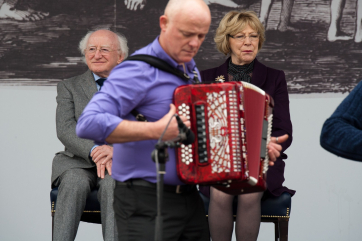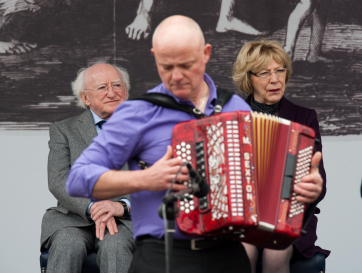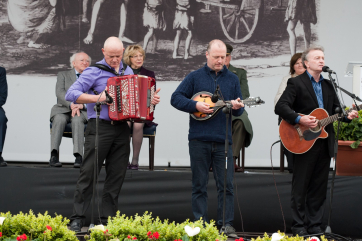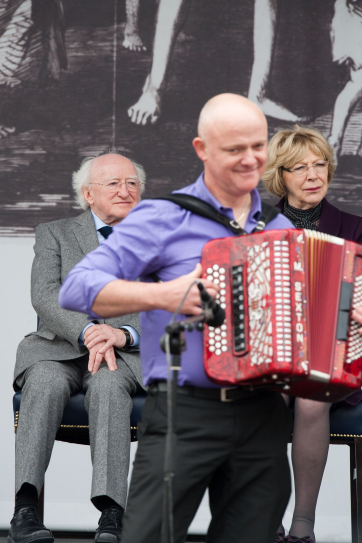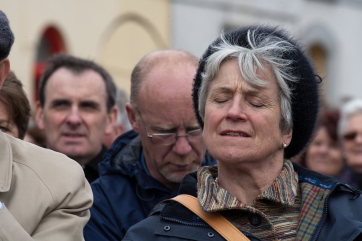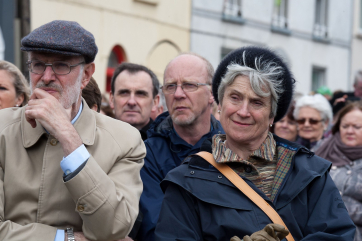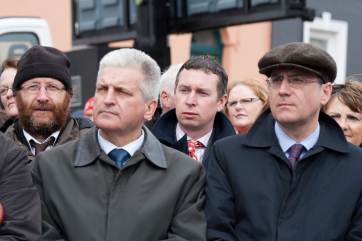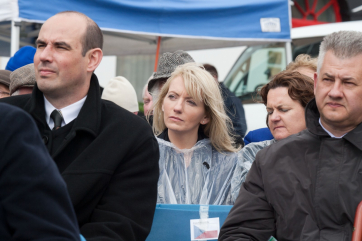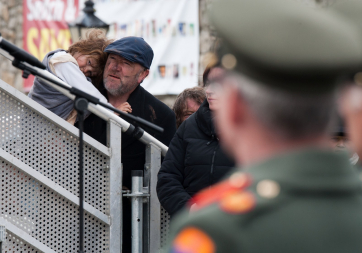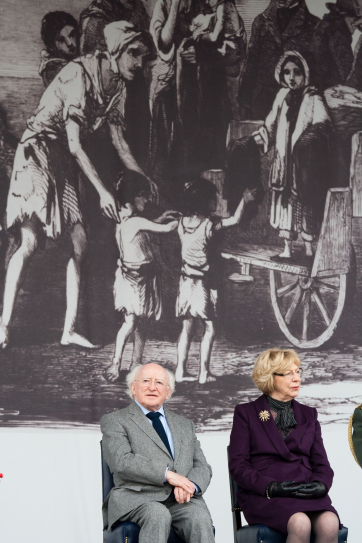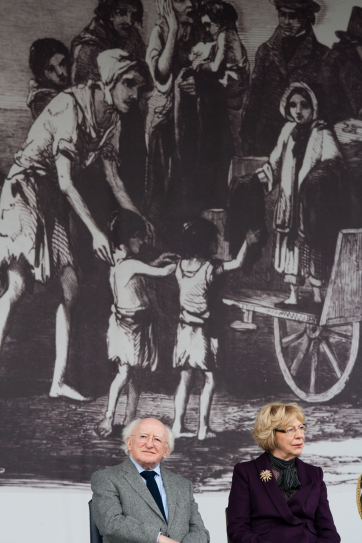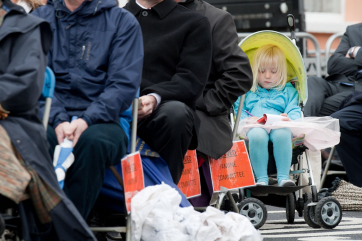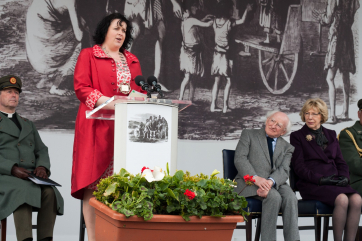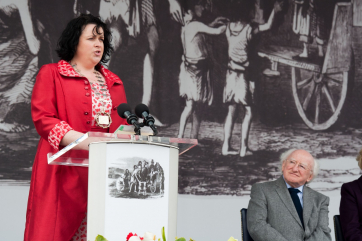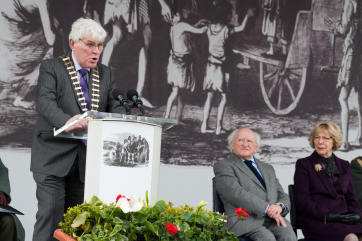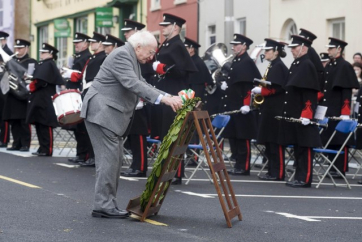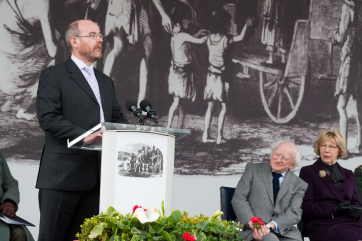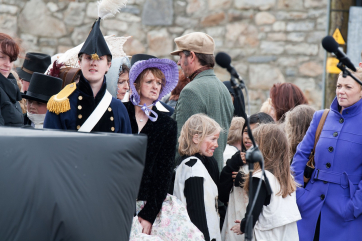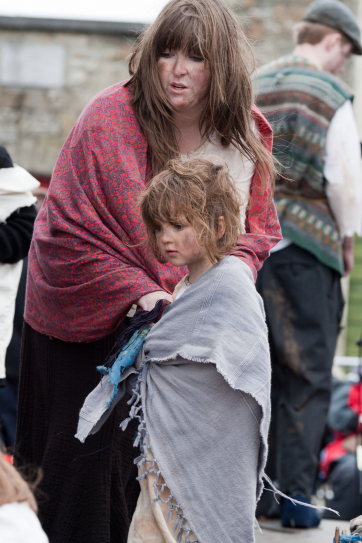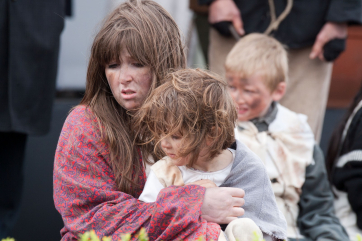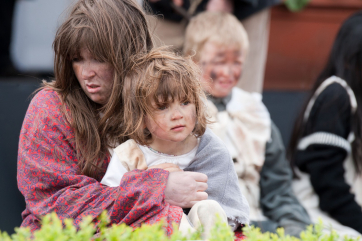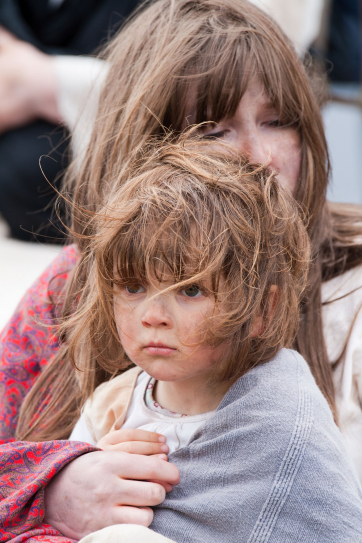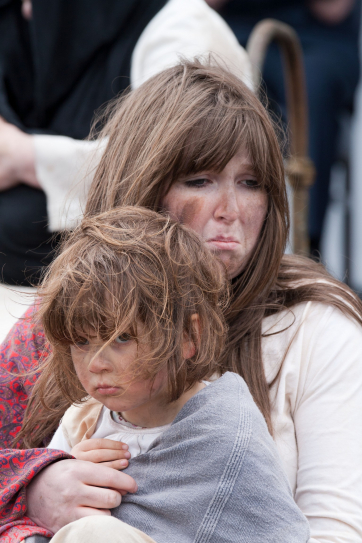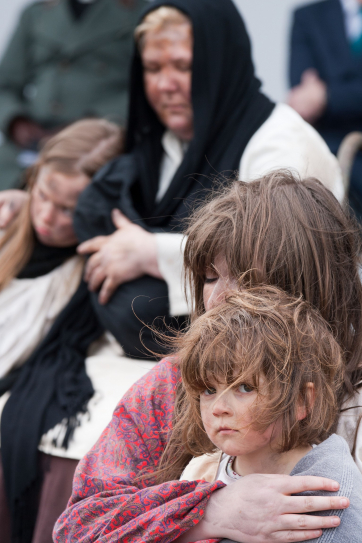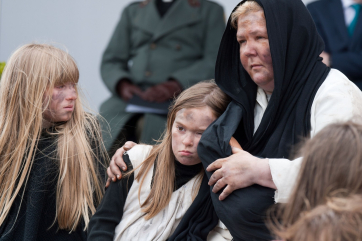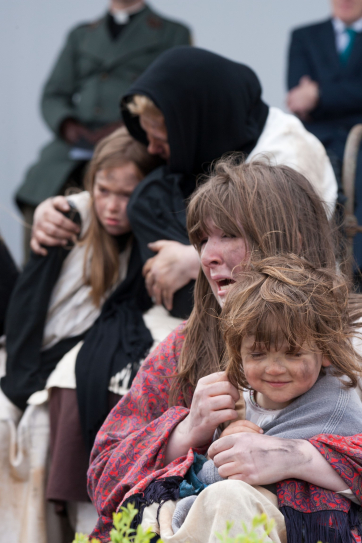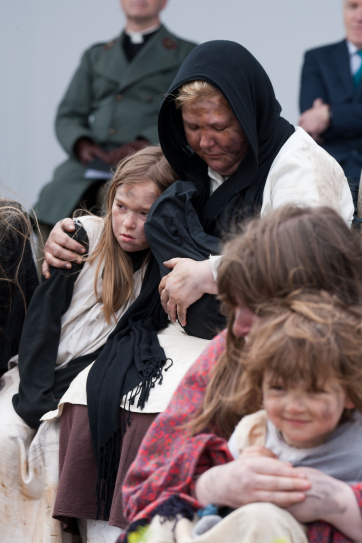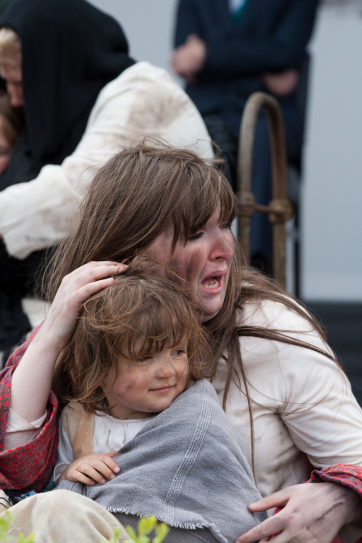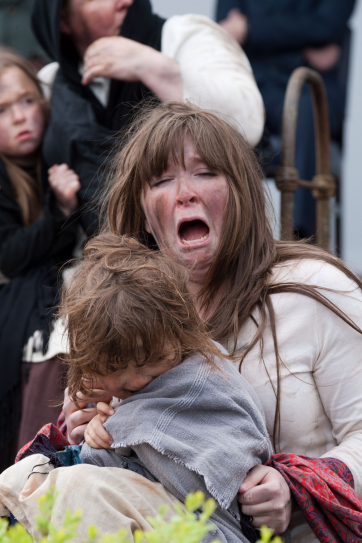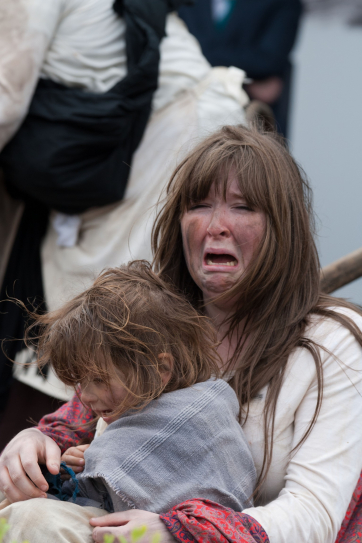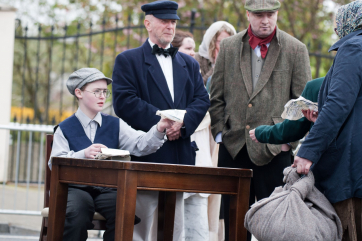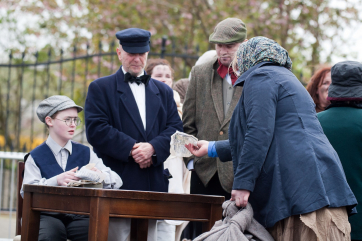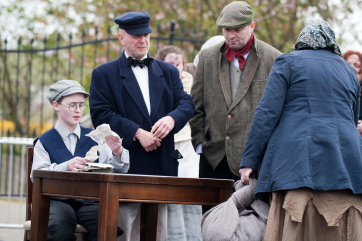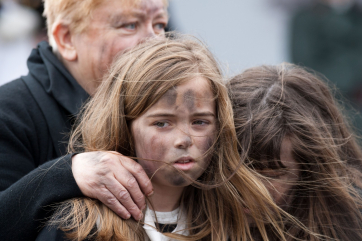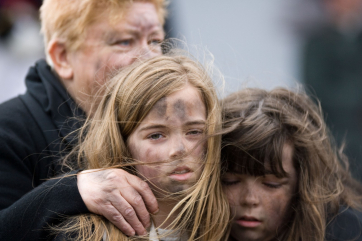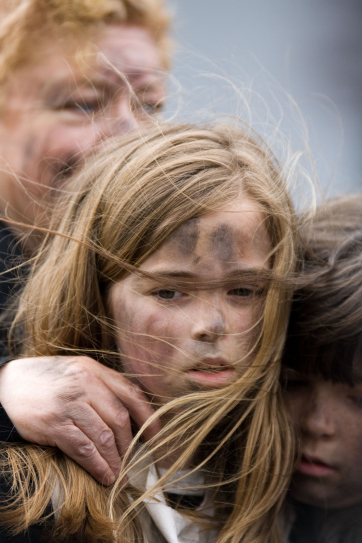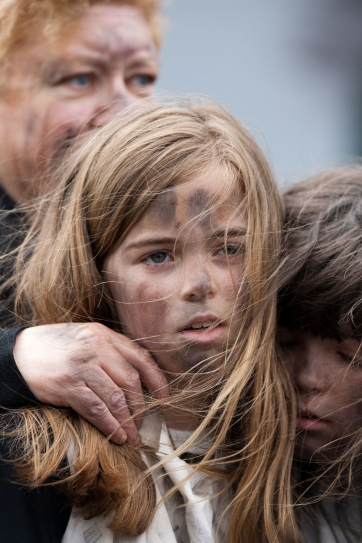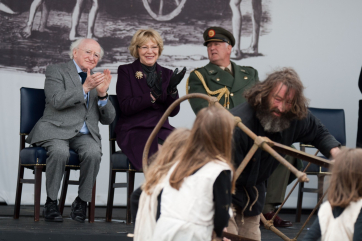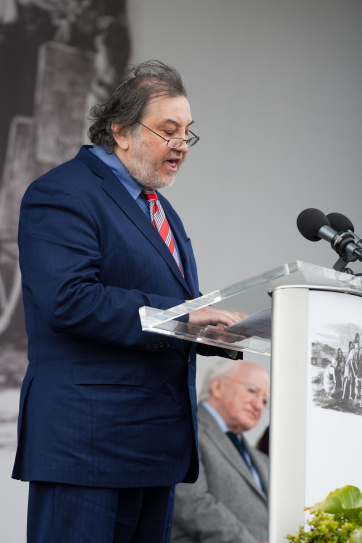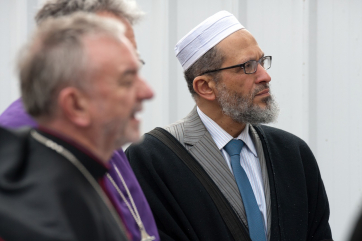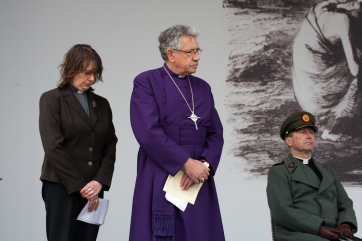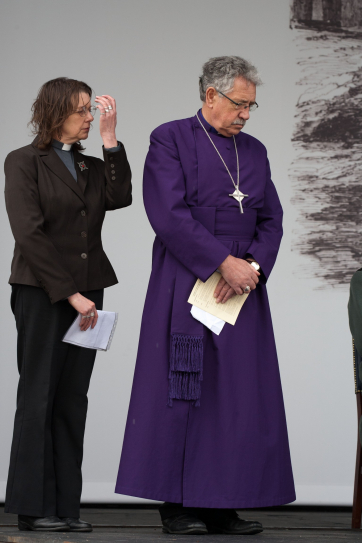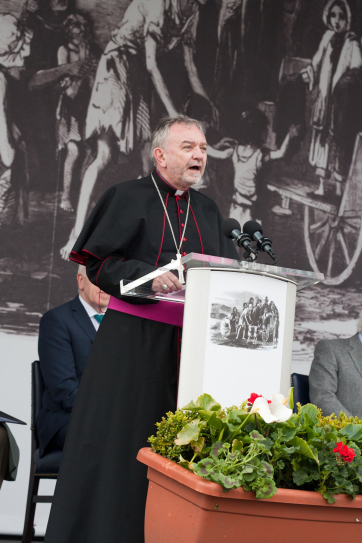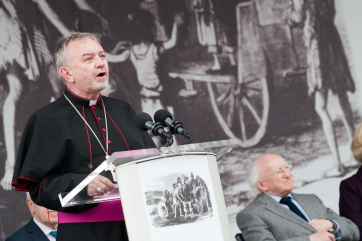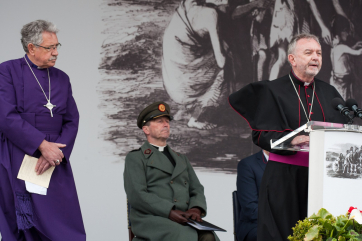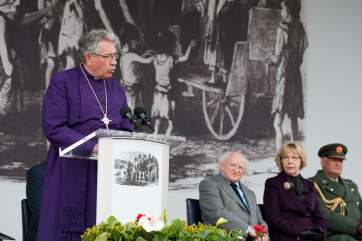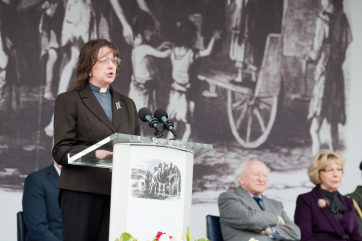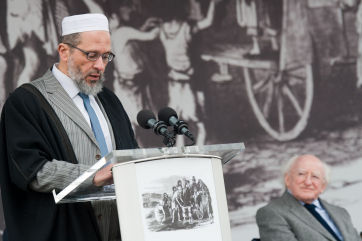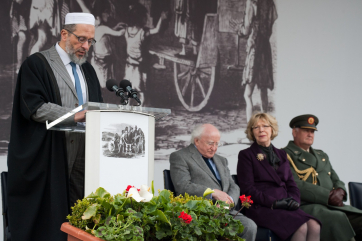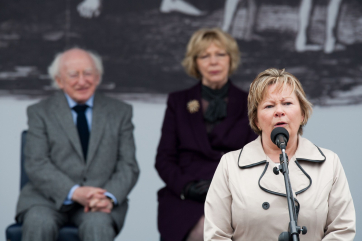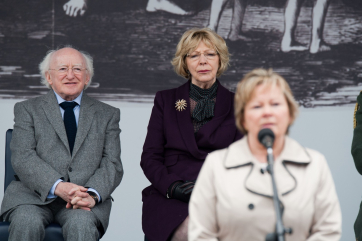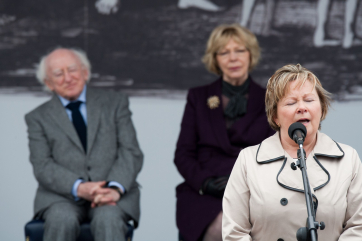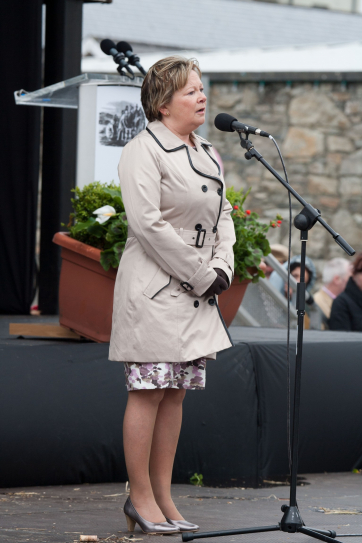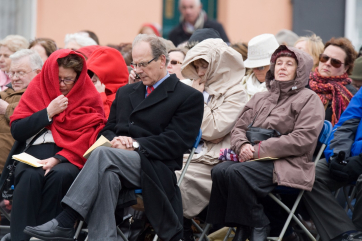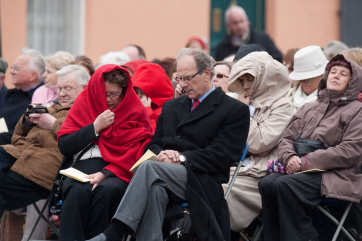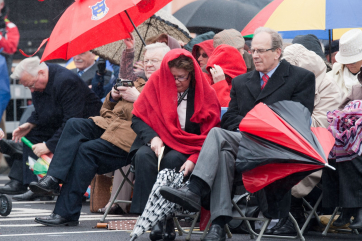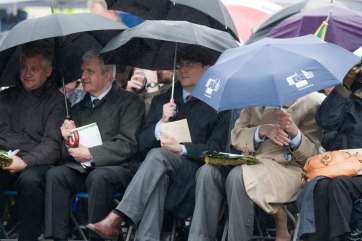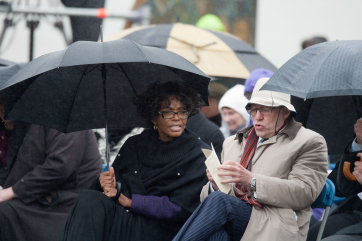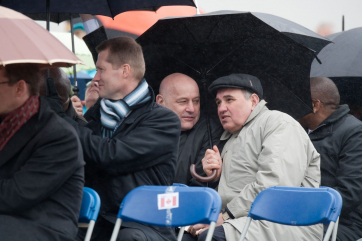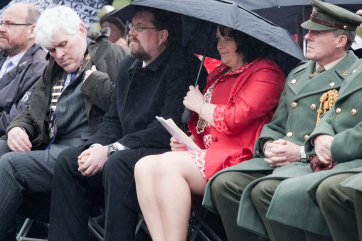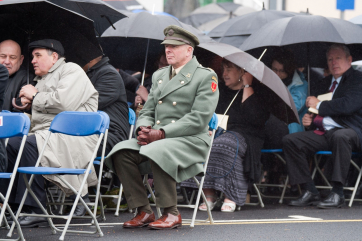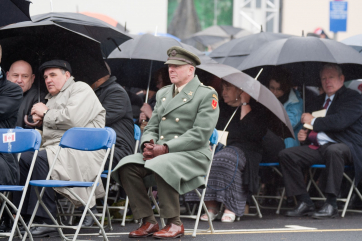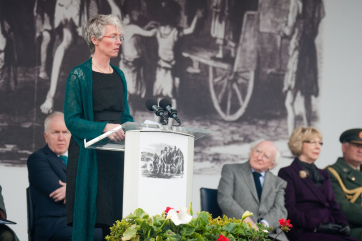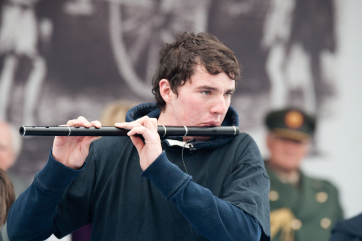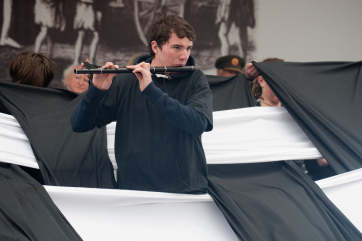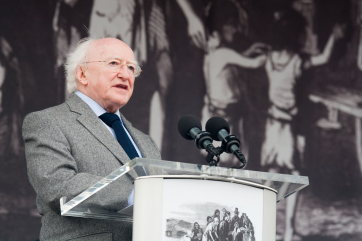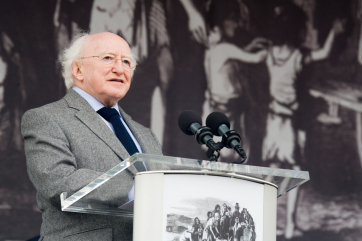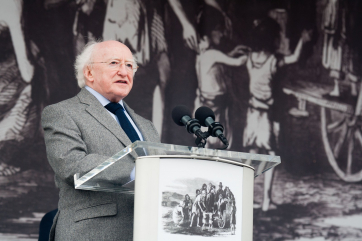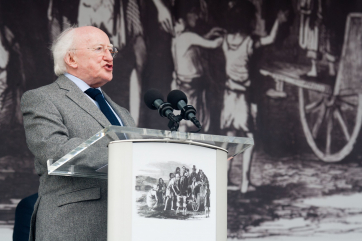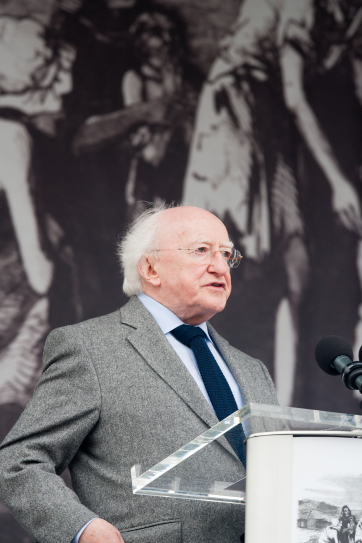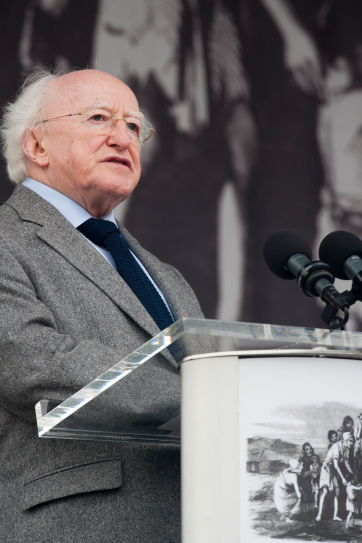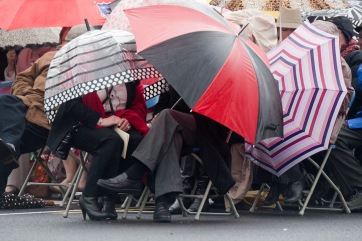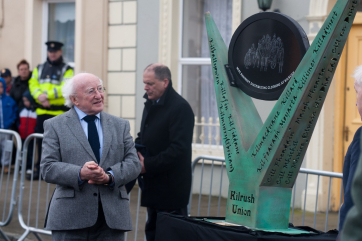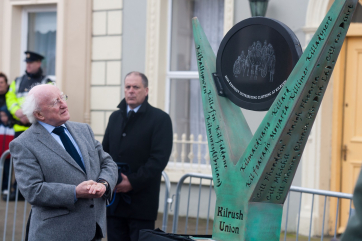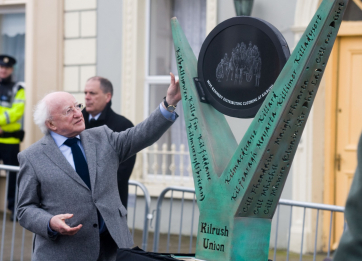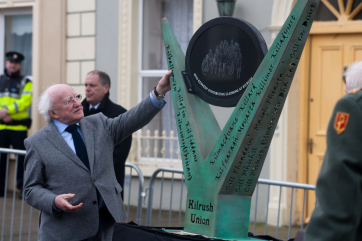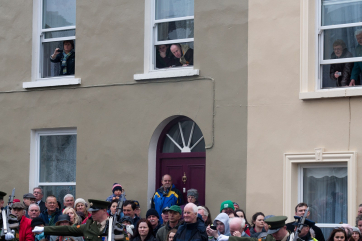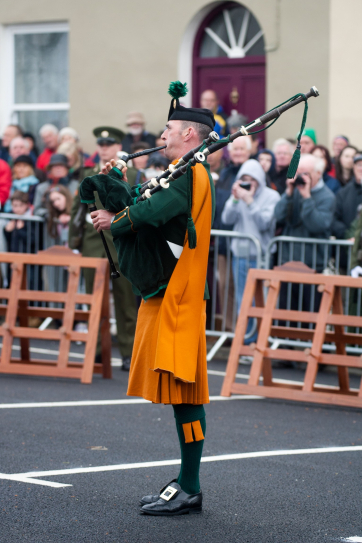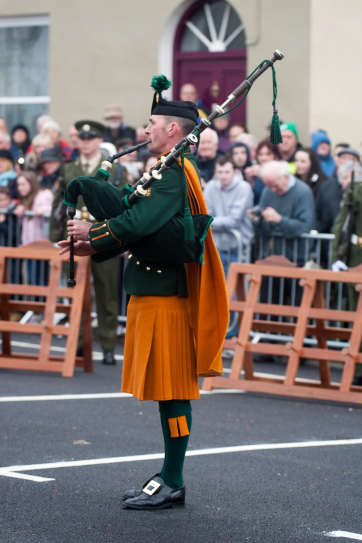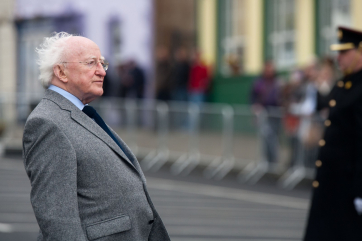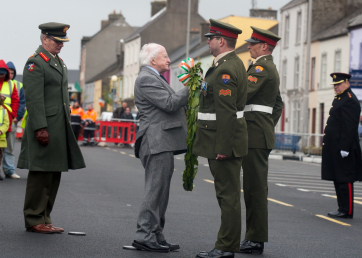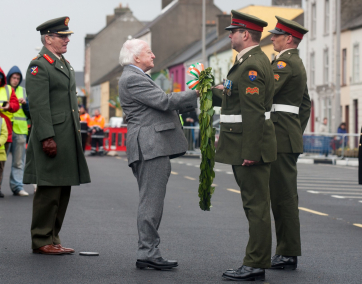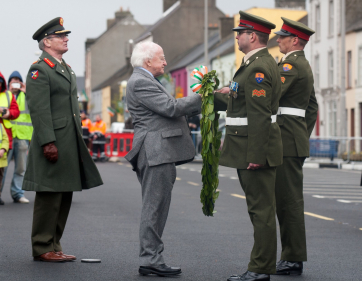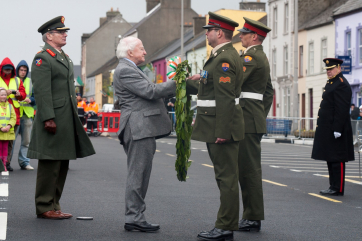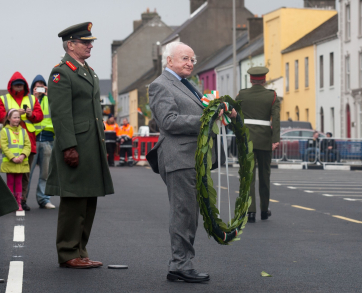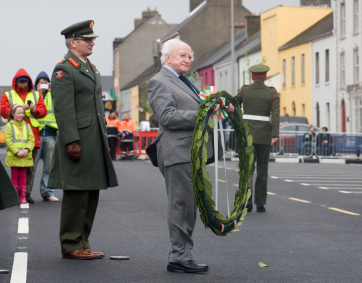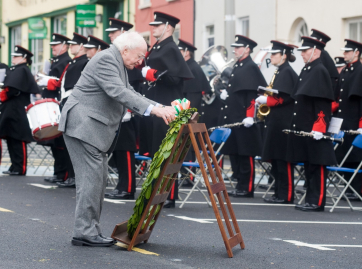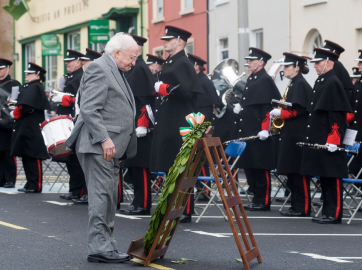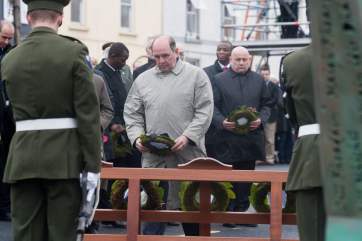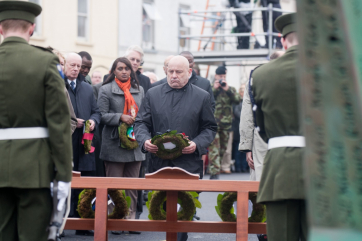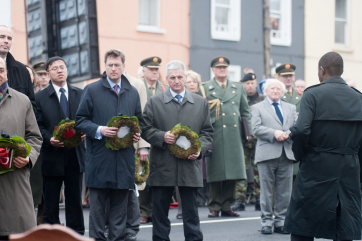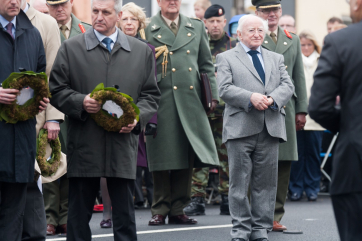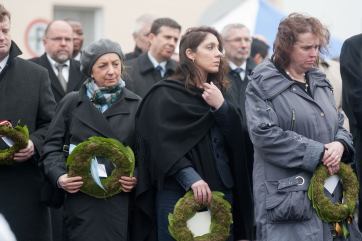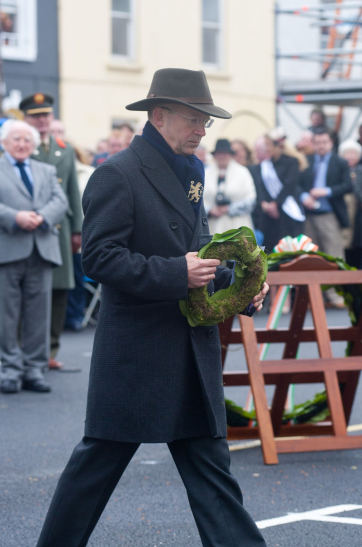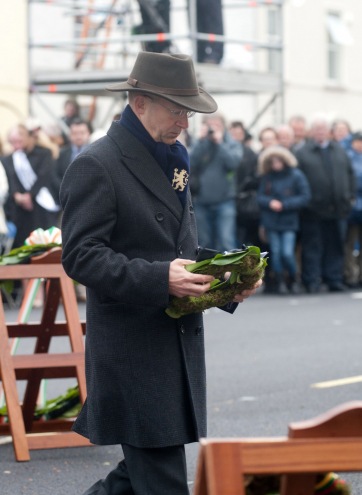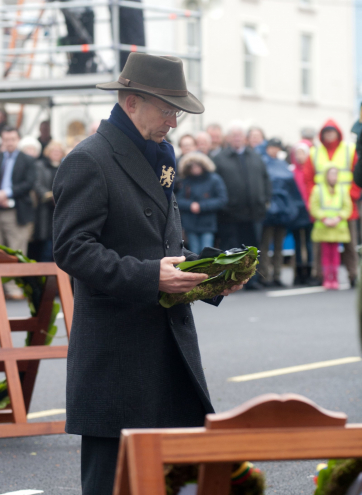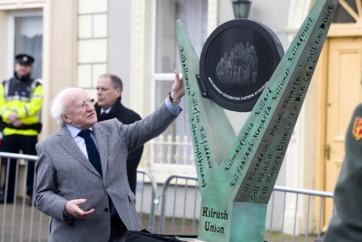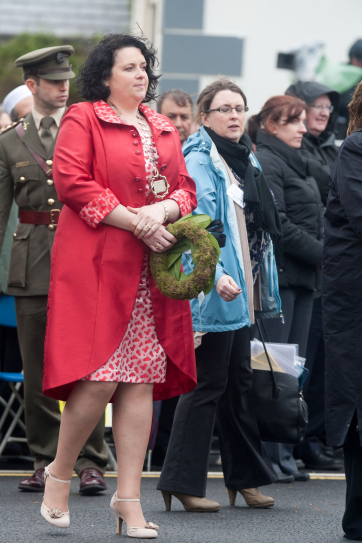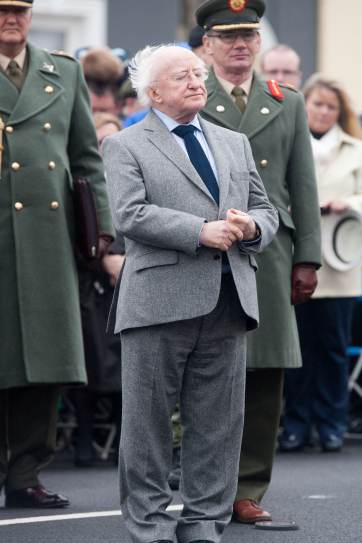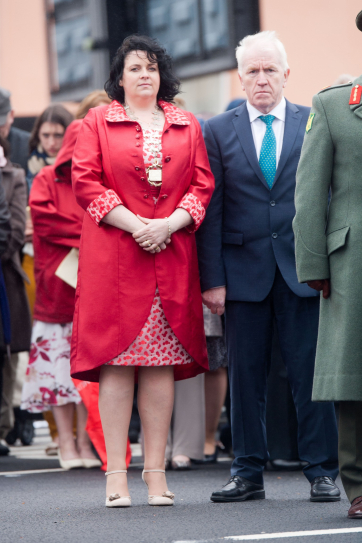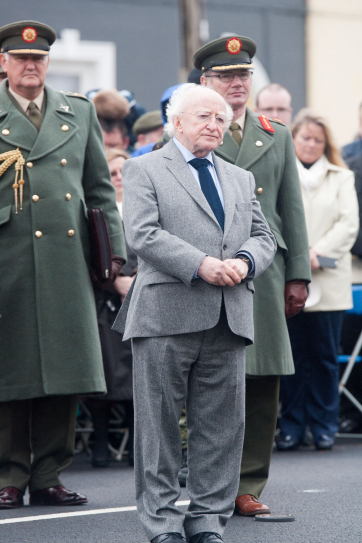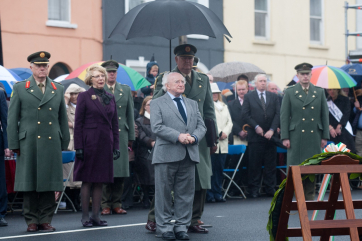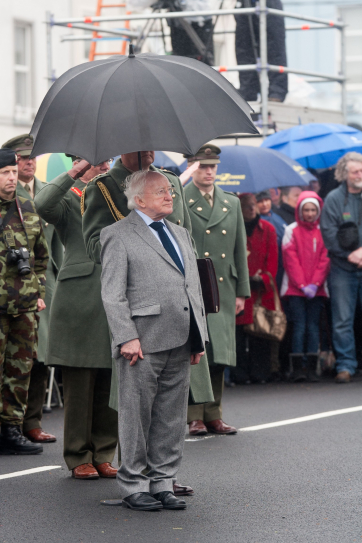Read President Higgins’ remarks at the National Famine Commemoration
Foilsithe: Dom 12th Bea, 2013 | 10:15
A Aire Deenihan, a aíonna oirirce, agus a chairde; is mór an onóir dom bheith i bhur dteannta inniu i gCill Rois chun na daoine dár sinsir a d’fhulaing agus a d’éag le linn an Ghorta Mhóir a thabhairt chun cuimhne.
Minister Deenihan, distinguished guests and friends, it is a great honour to be here with you all today in Kilrush as we remember our ancestors who suffered and perished during Ireland's Great Famine, An Gorta Mór.
I wish to thank all those have contributed such moving music, reflections and drama to our commemorative event.
The Great Irish Famine represents one of the truly transformational events of our nation's history – the impact it had on our population, landscape, society and language cannot be underestimated. While we reflect on the grief, hopelessness, loneliness and fear felt by so many Irish men, women and children during our country's most painful time, we also celebrate the determination and fortitude of those who struggled to survive and those who forged new lives on foreign shores.
Between 1760 and 1815, the availability of cheap food, in the form of the potato, and cheap fuel, in the form of turf, had permitted the Irish population to expand prodigiously. However, the diet of the labouring poor became ever more potato-dependent and, by the 1830s, one-third of the population (three million people) relied on potatoes for over 90% of their calorie intake.
In these circumstances, a failure of the potato crop would precipitate disaster; repeated failures would simply decimate the population. The unprecedented attack of Phytopthora infestans destroyed one-third of the crop in 1845, three-quarters in 1846 and 1847, and one-third in 1848. Massive mortality and emigration ensued: one million died and two million more emigrated in the next two decades, cruelly paralleling the three million ‘potato people’ who had become totally dependent on the tuber in the pre-Famine period. These deaths were disproportionately concentrated in the south and west of Ireland.
Today, we particularly remember the victims of this great tragedy in our history who hailed from Kilrush and its environs, and indeed from the province of Munster as a whole. Along with Connacht, Munster was severely impacted by An Gorta Mór. When the Famine ended, it had lost the greatest number of people of any province through death and emigration. A contributing factor to this outcome was that famine conditions were sustained throughout Munster for five years or more[1].
Within Munster, the county of Clare was the most severely affected during the Famine and Kilrush shares the unhappy distinction of being one of the three areas worst hit by death, disease and evictions. In fact, it is estimated that Kilrush lost 50% of its population between 1846 and 1851. It is very fitting therefore that we should gather today in Kilrush to honour the memory of its Famine victims. I wish to thank the people of Kilrush for so generously hosting us and for all the effort, care and imagination they have invested in this solemn national commemoration.
Between December 1849 and February 1850, the Illustrated London News carried a lengthy seven-part series on the operation of the new Poor Law, called 'Condition of Ireland: Illustrations of the New Poor-Law'. This was illustrated by a total of eighteen sketches. The series and sketches concentrated on the Poor Law Union of Kilrush. These eighteen contemporary sketches have become synonymous with how we perceive famine conditions today and show the pitiful conditions which existed during this time. One such sketch shows the deserted village of Moveen near Kilrush, a desolate reminder of a community torn apart by the ravages of famine.
The English writer G. K. Chesterton said of the Famine:
‘It was a tragic necessity that the Irish should remember it; but it was far more tragic that the English forgot it’.
Recent historians of the Famine have explored why Chesterton’s aspersion on the inadequate governmental response was so accurate. They have looked in detail at the dominant ideology of the period which regarded the phenomenon of famine as a form of providentialism - God’s direct personal intervention in the natural world. Operating from within this providentialist world view, official opinion stressed the necessity to allow the unrestricted operation of the natural moral law.
This encouraged a minimalist response to what was regarded as the inevitability of the Famine. It was seen as a short-term loss for a long-term gain. By eliminating the potato, it would, in the words of Charles Trevelyan at the Treasury, produce ‘permanent good out of transient evil.’ From this perspective, the demise of the potato would result in a modern, efficient Irish agricultural sector, with large-scale farmers and a wage-earning sector. The promotion of social engineering of this type, rather than relief or saving lives per se, dominated the administrative and political response to the Famine. Its catastrophic consequences should remind us all of the damage that can be inflicted by an unthinking and uncritical adherence to a flawed ideology.
The lack of empathy and compassion during the Famine caused the Donegal man Hugh Dorian to note:
‘The poor were treated and despised as if they were beings of quite a different creation. The satiated never understand the emaciated’.
However, we should also remember that there were those who understood and responded to the moral challenge during this calamitous time. Captain Arthur Edward Kennedy, a native of Co. Down, arrived in Kilrush in 1847 as an employee of the Poor Law Commission and was deeply disturbed by the events he witnessed on a daily basis. He and his family worked tirelessly to help the victims of the Famine. As you have seen, his young daughter is depicted in one of the Illustrated London News Sketches distributing clothes to the poor. Captain Kennedy's reports while in Kilrush are the most detailed accounts available for any part of Ireland and name literally thousands of people evicted from their homes[2].
The Great Irish Famine affected all communities in every province on the island of Ireland. Various charitable organisations and people throughout the world responded positively to pleas for support. We know that Quaker investigators travelled throughout Ireland, particularly in the west and south, and made reports based on first hand information about the true conditions that people were enduring during this time. These reports were published and served to refute charges that the distress being suffered by the Irish people were exaggerated. These reports help spread word of the true horror being experienced in Ireland to other areas, such as North America, resulting in increased aid being dispatched[3].
This time last year, I had the honour of addressing an audience in Fanueil Hall in Boston. There I spoke of Captain Robert Bennett Forbes and his brother John from Massachusetts, who were instrumental in petitioning Congress for the release of two naval ships that eventually took aid to Ireland during the spring and summer of 1847. We also know about the aid sent by the Choctaw Indians – themselves impoverished – and by the Shearit Israel Synagogue in New York.
The consequences of the Famine for the future of Ireland were traumatic, profound and enduring. It exerted massive long-term pressure on Irish society. The Famine caused a sea change in marriage patterns, the rising disparity between the ages of husbands and wives, and a surge in the number of bachelors and spinsters. That in turn prompted the creation of an authoritarian family structure as patriarchy embedded itself.
It also of course spawned emigration, which made it difficult to hold Irish families together. The Irish sense of ‘family’ emerged as an emotionally rooted island in a treacherous sea of breakdown and dispersal; a phenomenon that the novelist John McGahern was still writing about over a century later. The Irish sense of place was shadowed by an all too prevalent displacement.
The Famine profoundly scarred its survivors. The Dublin small farmer Malachi Horan observed that the Famine’s main effect had not been to create poverty - ‘they were used to that’ - but that it made the people ‘so sad in themselves’ and that ‘it made many a hard one too’.
It is not an exaggeration to assert that Ireland was culturally traumatised in the immediate post-Famine period. The cultural revival at the end of the nineteenth century was a delayed second-generation effect, inspired by people themselves born during the Famine. The best examples are Clareman Michael Cusack (1847-1906) and Mayoman Michael Davitt (1846-1906). Davitt claimed that ‘The men who made the Land League were the sons of those who went through the horrors of the Great Famine.’ Their reshaping of Irish culture was necessary to fill out the vacuum created by the hollowing out effect of the Famine.
Davitt used his family’s Famine experiences as the spur to undermine that Irish landlordism. His goal was to organise ‘a war against landlordism for a root settlement of the land question.’ But he was also an internationalist, who sympathised with India’s struggle for freedom and defended the rights of Aborigines against the depredations of white Australians. He spoke out forcefully against the vicious anti-Semitic pogroms in early twentieth-century Russia and supported the right of the Jewish people to a homeland in Palestine. He proposed as his epitaph:
Here lies a man who from his cradle to his grave was considered by his foes to be a traitor to alien rule and oppression in Ireland and in every land outside her shores.
Emulating Davitt’s ideals means that commemorating the Irish Famine should not be a form of self-absorption in victimhood, or an inward-looking exercise in nostalgia. Rather, at its best, contemplation of our Famine should encourage us to intervene in the contemporary world everywhere that we find injustice, poverty and hunger.
In the 150th commemoration of the Famine in the 1990s, the visible presence of women was striking. From Mary Robinson and Eavan Boland, to Nuala Ní Dhomhnaill, Sinéad Ó Connor, Christine Kineally, Medbh McGuckian and many others, Irish women actively involved themselves in an act of cultural recuperation. This generation of women drew attention to their marginalisation within the writing of Irish history. They understood that the Famine dead and Irish women emigrants were each characterised by silence and invisibility – both were victims of an historical erasure.
Nuala Ní Dhómhnaill’s poetry explores the devastating cultural change induced by the Famine, changes which cast Irish people as ‘fish out of water’. She writes:
‘In our attempt never to know anything like the Great Famine again, we even changed language’.
Ní Dhómhnaill describes the Famine as ‘the last and lethal body blow to a distinct native way of life and world view, epitomised by, but not purely confined to the Irish language’. She writes that, after the Famine and the flight from the native language, Irish people entered ‘a waking death where we had no emotional memory of who it was that we were or what it was that had happened to us.’
Another consequence of the Famine is the Irish communities that were scattered all over the world as so many, in desperation, left behind their families, homes and country to travel to distant shores in search of survival and a better life. Their migrant experience was far from easy, but from the most humble and challenging of beginnings, the Irish made new lives in their adopted homes and played an integral part in the history of Britain, Canada, the United States and Australia.
It is appropriate, therefore, that today we should honour the memory of those who were forced to emigrate to survive and celebrate the immense achievements of our Diaspora communities. We know that this resilience and courage has permeated through the generations and resonates today - albeit in different circumstances – many young Irish men and women are compelled to emigrate to make better lives for their families.
The Irish global family maintains a loyalty to its heritage and I know that many have travelled here today from all over the world to pay their respects to those who suffered during the Famine and to remember their ancestors. I also wish to thank the members of the diplomatic community who are with us today to share in this important act of memory.
Is mór an onóir dom é bheith páirteach sa searmanas tabhachtach seo ar Shráid Phroinséis i gCill Rois. Gabhaim buíochas ó chroí libh ar fad a ghlac páirt sa searmanas agus a thug bhur gcuid ama agus bhur gcuid buanna go fial agus imeachtaí an lae á n-ullmhú. Chuir sibh go mór leis an ócáid tochtmhar seo.
[I am truly honoured to have been a part of this very moving ceremony here on Frances Street in Kilrush. I sincerely thank all of you whose participation has greatly added to this poignant event and those who gave so generously of their time and talent in preparing for today's commemoration.]
Many of our Irish people died believing that their lives were of no value; that they counted for nothing. By our presence here today, we honour their lives, we remember their suffering and we grieve for them all.
Ar dheis Dé go raibh siad – may their souls rest in peace.
[1] Smyth, William J., The Province of Munster and the Great Famine (Atlas of the Great Irish Famine 1845-52)
[2] Taken from the Kilrush submission to the National Famine Commemoration Committee
[3] Hatton, Helen, The largest amount of good: Quaker relief efforts (Atlas of the Great Irish Famine 1845-52)

